- Home
- Missions
- Data
- Communications
- People
- The Earth Observer Newsletter
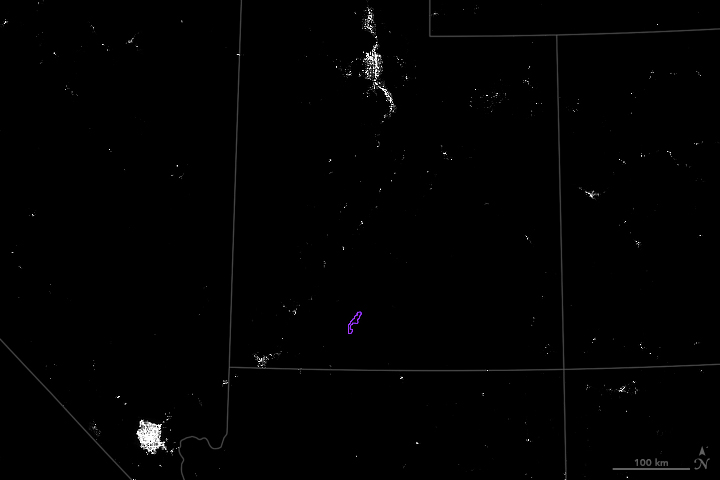
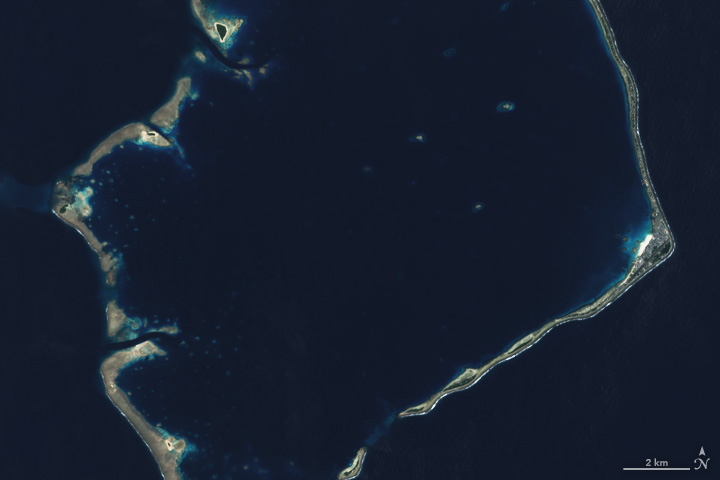
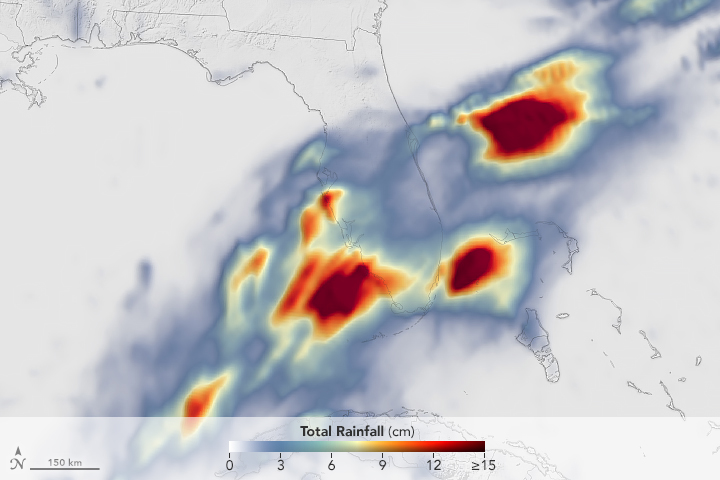
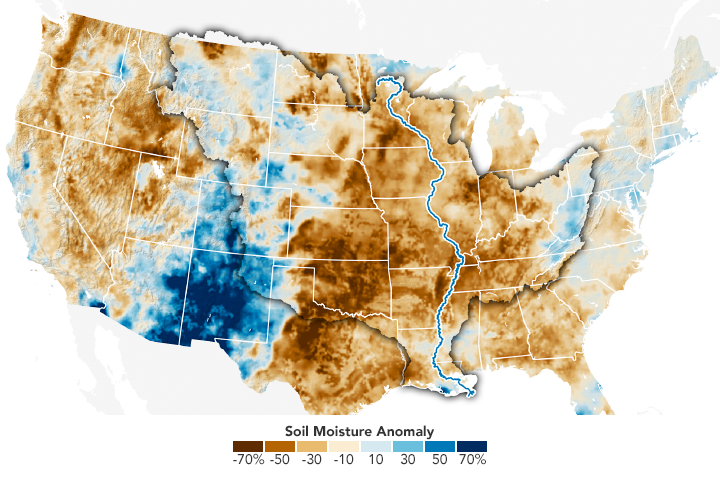
Recent Imagery
You will be directed to the NASA Visible Earth webpage when you select Images by Mission below, or click on the images at right that are randomly generated to represent four out of all possible topics.
Featured Content
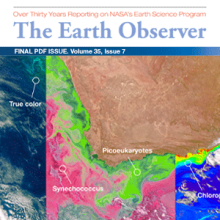 |
NASA's PACE Mission Makes Data Available to the PublicIn the January–February 2024 issue of The Earth Observer, read all about NASA’s Earth Science Technology Office (ESTO), which just celebrated its 25-year milestone anniversary, and NASA’s diverse array of exciting hands-on science engagement activities featured during the 2023 American Geophysical Union (AGU) Annual Meeting. Also included in this final PDF issue of the newsletter—in addition to regular NASA Earth science news highlights and the Earth Science Meeting and Workshop Calendar—are a summary of the 2023 GRACE Follow-On Science Team Meeting and highlights from NASA's Plankton, Aerosol, Cloud, ocean Ecosystem (PACE) mission. |
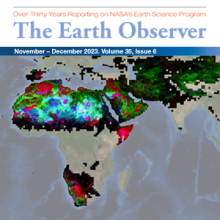 |
NASA's Earth Surface Mineral Dust Source Investigation (EMIT)In this issue of The Earth Observer, read about the February 8 launch of NASA's Plankton, Aerosol, Cloud ocean Ecosystem (PACE) mission, see the latest data from NASA's Earth Surface Mineral Dust Source Investigation (EMIT), learn about NASA's Science Activation (SciAct) Program, celebrate 25 years and 10,000 profiles from the SHADOZ Ozonesonde Network, and much more! |
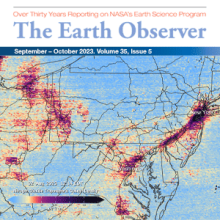 |
NASA's Tropospheric Emissions: Monitoring of Pollution (TEMPO) Mission Releases First ImagesIn the September–October issue of The Earth Observer, turn to page 3 to read our in-depth feature article covering Earth science highlights from the "History of NASA and the Environment" symposium held at Georgetown University in September 2022. Also in this issue are meeting summaries from the Landsat and CERES science teams, as well as a summary of the "South/Southeast Asia Meeting on Air Pollution in Asia." |
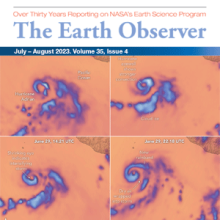 |
NASA's TROPICS Mission Releases "first light" ImagesIn the July-August issue of The Earth Observer, turn to page 4 to read our feature article on NASA's Earth Day 2023 celebration at Washington, DC's Union Station. On page 13 you will find a summary of the 2023 MODIS/VIIRS Science Team Meeting. Also included in this issue are news and meeting/event highlights from NASA Earth Science. Topics covered include NASA's TROPICS and NISAR missions, and a dive into why NASA wants to identify phytoplankton species from space. |
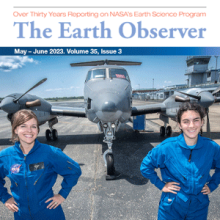 |
From Low Earth Orbit to the Kitchen Table: NASA Earth Science Data Continues to Serve America's FarmersIn the May-June issue of The Earth Observer, turn to page 5 to learn about how NASA and its partners around the globe are working together to find the best ways to rethink and reshape our food and agriculture systems. Our feature article summarizes NASA's participation again this year in the Commodity Classic event, where agency representatives shared information, tools, and resources drawn from NASA’s Earth-observing satellites and scientific research to highlight the value of partnerships between NASA and American agriculture. The Editor's Corner highlights NASA's Student Airborne Research Program (SARP), which engaged 22 high-performing STEM undergraduate students from colleges nationwide in a real-world NASA research campaign—SARP-East (E)—that began in June and continued through July. |
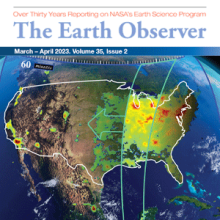 |
TEMPO: Revolutionizing Atmospheric Chemistry Measurements from SpaceThe January–February 2023 issue of The Earth Observer reported on the successful launch of NASA’s Tropospheric Emissions: Monitoring of Pollution (TEMPO) mission on April 7, 2023. The Intelsat 40e Spacecraft is now in its orbital slot positioned at 91°W longitude. On June 7, 2023, the TEMPO instrument was powered on. First-light images are expected in late July, followed by an intensive period of on-orbit instrument characterization activities until October, after which the first Level-2 science data products will be released. Turn to page 5 of the March–April 2023 issue to read about a joint science meeting for the TEMPO, Geostationary Extended Operations (GeoXO) Atmospheric Composition Instrument (ACX) and Tropospheric Ozone Lidar Network (TOLNet) programs that took place May 1–5, 2023. The theme for the meeting was “Building the Pathway from TEMPO to GeoXO.” |
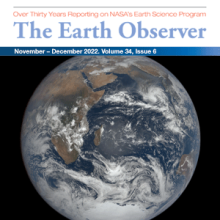 |
NASA Participates in Pecora 22 Symposium and Celebrates Landsat 50th AnniversaryNASA celebrated 50 years of the NASA–United States Geological Survey (USGS) Landsat program by participating in the 2022 Pecora Memorial Remote Sensing Symposium (Pecora 22 Conference), held October 23–28, 2022, at the Hilton Denver City Center Hotel in Denver, CO. Pecora 22 is the latest in a series of symposia named after William T. Pecora, the USGS Director who helped initiate the Landsat program in the 1960s. To read about how NASA supported this event, turn to page 4 of the Nov-Dec 2022 issue of The Earth Observer. |
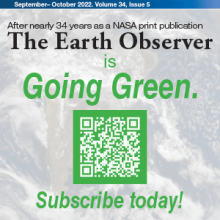 |
Subscribe Today! The Earth Observer is Going GreenBeginning with the January–February 2023 issue, The Earth Observer will be published exclusively online. To receive notification when new issues are published online your email address must be registered on our subscription list. Click here to Subscribe or turn to page 43 of the September-October issue to learn more, so you can stay connected to The Earth Observer beginning with Volume 35. Discontinuing The Earth Observer as a print publication after almost 34 years was a difficult decision to make. However, we believe it is the best choice at this time to position the publication and its staff to thrive in a future where communication is increasingly digital. |
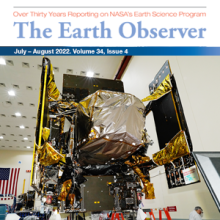 |
The Earth Observer Features SCOAPE and TEMPOThe first fully integrated powered testing of the Tropospheric Emissions: Monitoring of Pollution (TEMPO) instrument on Intelsat IS40e at Maxar Technologies’ manufacturing facility has been completed. TEMPO is currently targeted to launch in January 2023 into geostationary orbit, where it will have a continuous view stretching from Puerto Rico and Mexico to northern Canada—and including the entire continental U.S. To learn more about TEMPO and the three-member, “virtual” Air Quality Constellation of which it will be a part, see the News story on page 34 of the July-August 2022 issue of The Earth Observer. Continuing with the air quality theme, this issue’s feature article summarizes an interagency partnership between NASA and the Department of Interior’s Bureau of Ocean Energy Management to monitor and quantify air pollution produced by oil and natural gas operations in the Gulf of Mexico. |
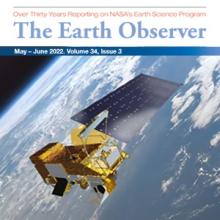 |
Aqua Turns 20On May 4, 2002, at 2:55 AM Pacific Time, a rocket carrying NASA’s Aqua satellite—the second flagship satellite of the agency’s Earth Observing System (EOS) launched into space from Vandenberg Air Force Base, located in California. Since then, Aqua has orbited the Earth more than 100,000 times, and produced one of the longest near-continuous records of Earth observation data ever assembled. Its momentous Earth observation voyage has continued for more than two decades—far beyond anyone’s expectations. |
